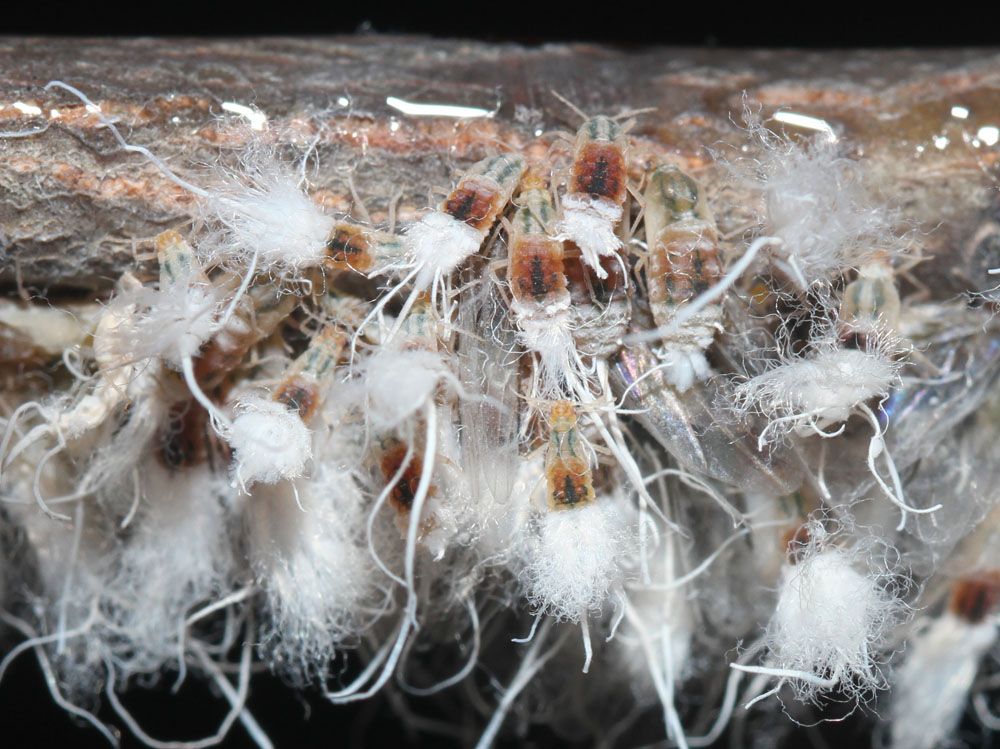
Beech Blight Aphid – Grylloprociphilus imbricator
Beech Blight Aphid: Appearance, Territory, Damage, and Life Cycle
Latin Name: Grylloprociphilus Imbricator
Appearance: The beech blight aphid (Grylloprociphilus imbricator) is a tiny Hemiptera bug that feeds largely on the sap of American beech trees. The aphid itself has a slightly bluish hue, however, it may be seen in large numbers on the twigs, short branches, and undersides of the leaf of the American beech, Fagus grandifolia. A thick, white, fluffy discharge mixed with long, thin white filaments may hide the back part of the abdomen. Populations can be seen as early as July, but they can be stunning by September and October. Infested beech trees may appear to have snow on their smaller branches and twigs. In this way, they resemble colonies of the woolly alder aphid, which is a pest of some alders, as the name indicates.
The aphids that hatch from overwintering eggs of Grylloprociphilus imbricator on American beech are around 5-6 mm long and have been compared to termite queens. They feature four-part antennae with circular groupings of wax pore plates on each segment. These circular groups feature massive core facets that are surrounded by significantly smaller peripheral ones.
Hosts Plants: The beech blight aphid cycles from American beech to bald cypress (and maybe Cryptomeria).
Territory: Maine to Florida
Damage Insect Cause: Blight of the Beech Aphids are found in clusters and are often mistaken for fungi or lichens. They, like other aphids, use their mouth parts to suck the fluids from their host plant. Once the plant liquids are eliminated, they form a sticky, delicious substance known as “honeydew.” Because honeydew is a sweet and appealing food source for ants, it is expected that ants will congregate around aphids to capture the sap-like secretion.
Though the Beech Blight Aphid is small in comparison to other insects, it has the capacity to damage plant populations in massive quantities. Aphids proliferate quickly and can dry out and destroy wide areas of trees if not controlled. The wasps and beetles that devour them naturally control their number. Chemical sprays that specialize in killing aphids of various types are also available, albeit they are typically more feasible for use on smaller home plants and garden plants.
Life History and Habits: Grylloprociphilus imbricator overwintering eggs hatch in the spring and become wingless stem moms. These fundatrices grow on the underside of an American beech leaf. When they reach adulthood, they migrate to the petioles and stems, where they create a great number of progenies. All of these nymphs mature into alatae, which either stays in the colony to generate more offspring or spread to other beech trees – or to the secondary host.
